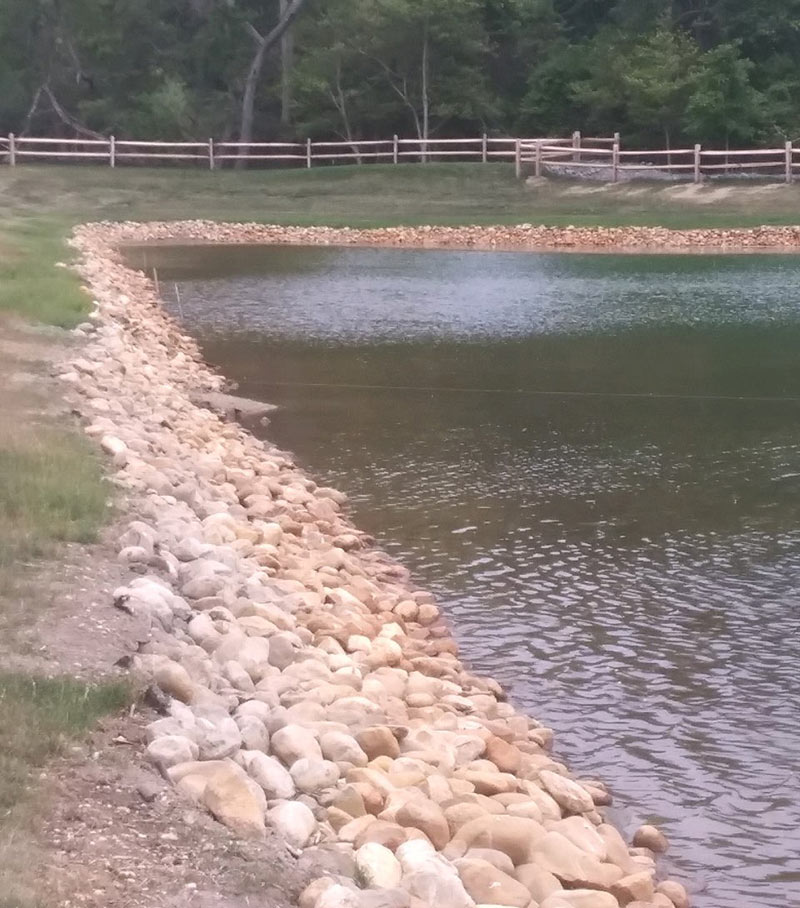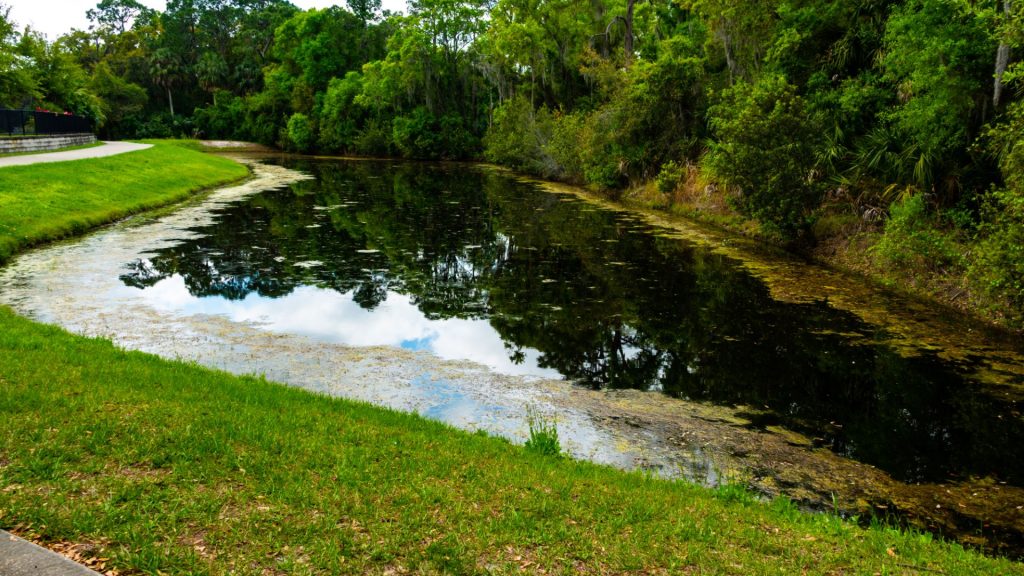Municipalities or property owners are responsible for maintaining retention ponds. Retention ponds, also known as detention ponds, are essential water management systems used to control stormwater runoff and prevent flooding in urban areas.
These ponds collect and retain excess rainwater, allowing it to slowly infiltrate into the ground or be released into nearby water bodies at a controlled rate. Maintaining retention ponds involves routine tasks such as removing debris, inspecting the pond’s infrastructure for any damage or erosion, and ensuring proper functioning of inlet and outlet structures.
Regular vegetation management and water quality testing are also necessary to ensure the pond’s effectiveness. By fulfilling their maintenance responsibilities, municipalities and property owners can ensure the long-term functionality and benefits provided by retention ponds.

Credit: eastcoastsitework.com
Legal Responsibility
In the context of retention ponds, legal responsibility is a crucial aspect that determines who is accountable for maintenance and upkeep. Understanding the legal framework behind retention pond ownership and maintenance is essential for property owners, local municipalities, and other stakeholders involved.
Municipal Regulations
Municipalities play a significant role in establishing regulations for retention pond maintenance. Local governments typically have ordinances and codes that outline the responsibilities of managing retention ponds within their jurisdiction. These regulations may specify maintenance requirements, inspection schedules, and consequences for non-compliance. Property owners must adhere to these regulations to ensure the proper care of retention ponds, as outlined by the municipality.
Private Property Ownership
Private property owners are often responsible for maintaining retention ponds located on their land. Whether these ponds serve as stormwater management facilities or decorative features, property owners are legally obligated to keep them in proper condition. This responsibility entails regular inspections, debris removal, and addressing any issues that may affect the functionality and safety of the retention pond. Property owners should familiarize themselves with local ordinances and regulations to fulfill their legally prescribed duties.
Environmental Considerations
Responsibility for maintaining retention ponds falls on the property owners, who must ensure proper upkeep to minimize environmental impacts. Successful maintenance includes regular inspections, debris removal, and necessary repairs to safeguard nearby ecosystems.
Maintaining retention ponds is crucial for the environment and local ecosystems.Impact On Local Ecosystems
Retaining ponds play a vital role in preserving the delicate balance of local ecosystems.Flood Control Measures
Through effective retention pond maintenance, flood control is significantly augmented.Maintenance Requirements
Retaining ponds, also known as retention ponds, play a crucial role in managing stormwater runoff, preventing flooding, and protecting water quality. However, for these ponds to continue functioning effectively, regular maintenance is necessary. Maintenance requirements for retention ponds involve various tasks such as inspections and sediment removal. It is important to understand these maintenance needs and the responsible parties involved in ensuring that retention ponds are properly maintained to preserve their functionality and ecological value.
Regular Inspections
Regular inspections are a vital part of maintaining retention ponds. These inspections help identify potential issues such as erosion, excessive vegetation growth, blockages, or damage to infrastructure. Scheduled periodic inspections ensure that problems are detected early on, allowing for prompt and cost-effective repairs.
Sediment Removal
One of the significant maintenance tasks for retention ponds is sediment removal. Over time, sediment carried by stormwater can settle in the pond, reducing its capacity to hold water and potentially impairing its effectiveness. Regular sediment removal helps maintain the desired depth and volume of the pond, ensuring its ability to handle stormwater during heavy rainfall events.
- Regular sediment removal helps prevent excessive nutrient build-up, which can lead to water quality issues.
- It is important to follow best practices and regulations when conducting sediment removal to minimize any negative impacts on the pond’s ecosystem and nearby water bodies.

Credit: pondmedics.com
Community Involvement
Neighborhood Initiatives
Citizens can take charge of retention pond maintenance through neighborhood clean-up efforts.
Residents organize regular clean-up days to keep ponds clear of debris and help prevent flooding.
Volunteer Programs
Local organizations offer volunteer programs for residents to contribute to pond maintenance.
Volunteers help with weed removal, trash pick-up, and monitoring water levels to ensure pond functionality.
Professional Services
Professional services play a crucial role in maintaining retention ponds. Landscaping companies and pond maintenance services are responsible for ensuring that these water bodies are properly cared for and kept in good condition. Let’s delve into the specifics of their roles and responsibilities.
Role Of Landscaping Companies
Landscaping companies often oversee the maintenance and upkeep of retention ponds as part of their comprehensive service offerings. Their primary responsibilities include:
- Inspecting the overall condition of the pond and its surrounding vegetation regularly.
- Trimming and maintaining the grass, shrubs, and trees around the pond to prevent overgrowth.
- Managing the erosion of soil and banks to ensure the structural integrity of the pond.
- Performing regular litter and debris removal to maintain the visual appeal of the pond and prevent blockages.
Contracting With Pond Maintenance Services
When more specialized care is required, contracting with pond maintenance services becomes essential. Such professional services are equipped to handle a wide range of tasks, including:
- Assessing the water quality and implementing treatments to maintain optimal conditions.
- Inspecting and repairing infrastructure such as pumps, pipes, and liners as needed.
- Managing the growth of aquatic vegetation to prevent clogging and ensure healthy water flow.
- Implementing erosion control measures to safeguard the pond’s structural stability.
Cost Allocation
When it comes to the maintenance of retention ponds, the issue of cost allocation is an important aspect that needs to be addressed. Determining who is responsible for funding the maintenance of these essential water management features is crucial for ensuring their efficacy and longevity.
Government Funding
In some cases, local governments may allocate funds for the maintenance of retention ponds. These funds are typically sourced from taxpayer dollars and may be part of a broader infrastructure maintenance budget.
Assessment On Property Owners
Alternatively, the cost of retention pond maintenance may be distributed among property owners in the vicinity of the retention pond. This could be based on factors such as the size of the property or the amount of runoff it generates.
Credit: www.cranberrytownship.org
Conclusion
When it comes to the upkeep of retention ponds, shared responsibility among property owners is crucial. Regular maintenance is key. Partnering with professionals ensures functionality and compliance with regulations. Effective management benefits the environment and community as a whole. Prioritizing this upkeep ensures long-term value and sustainability.




